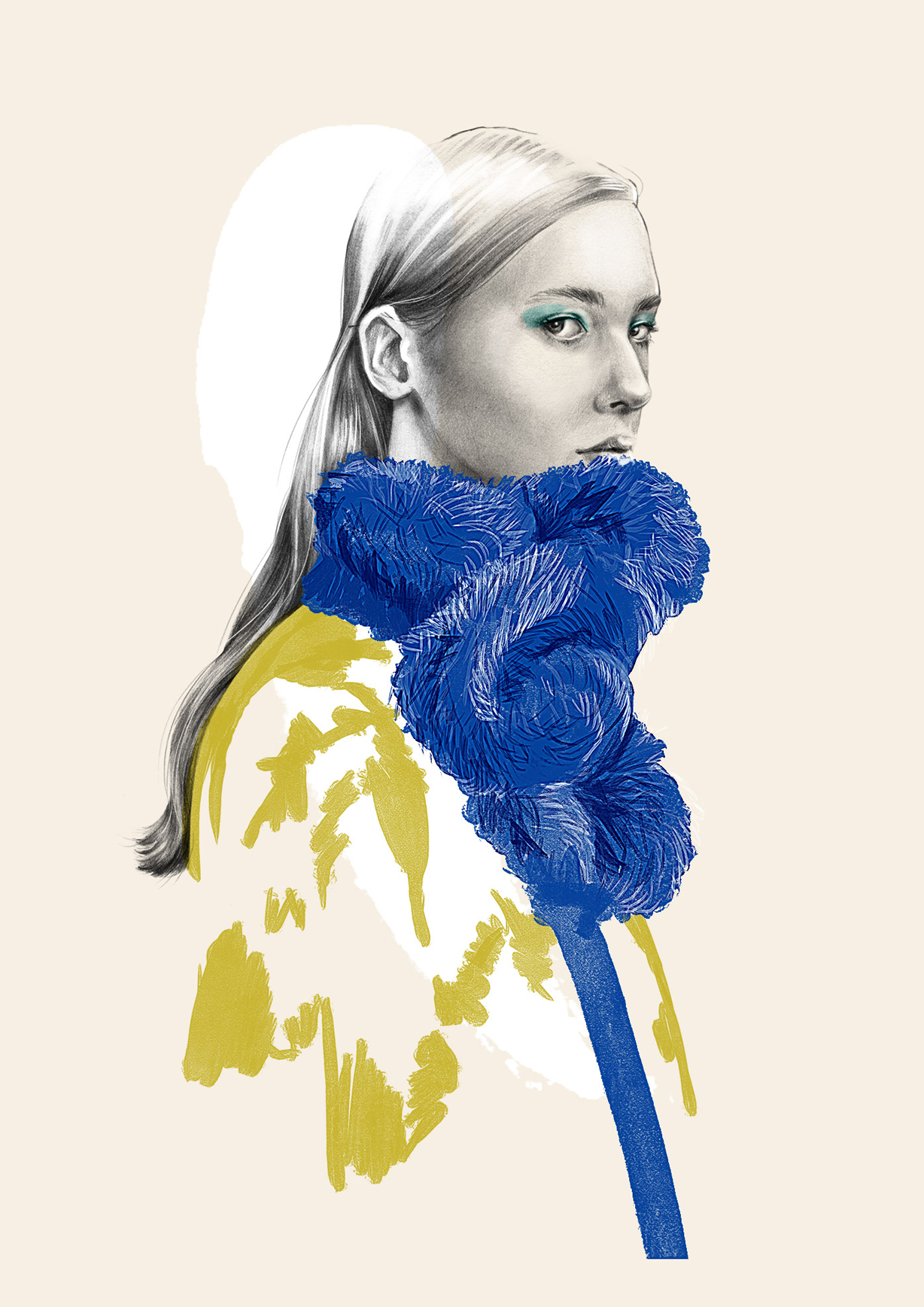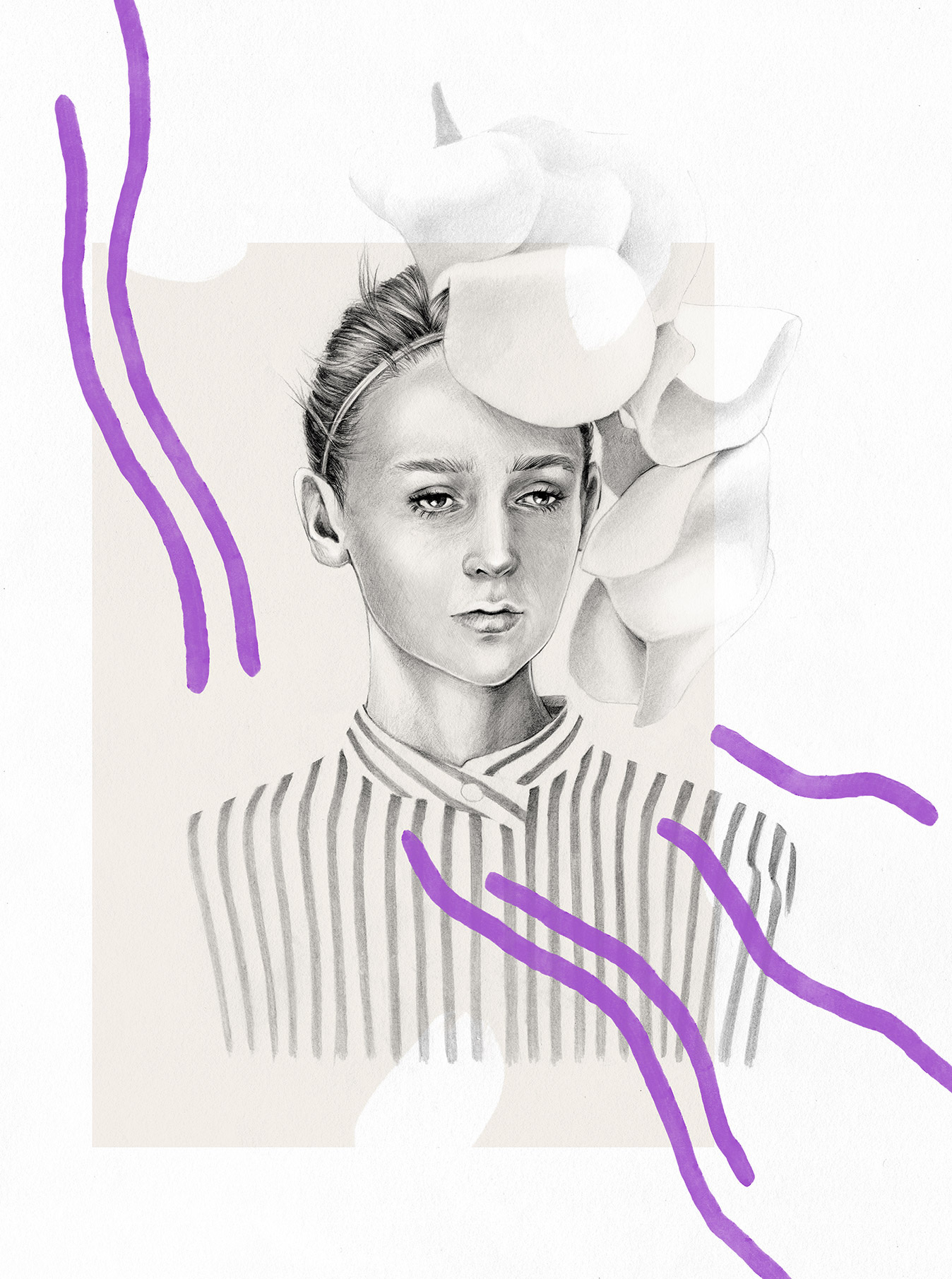Fashion illustration tips from Polish talent Ewelina Dymek
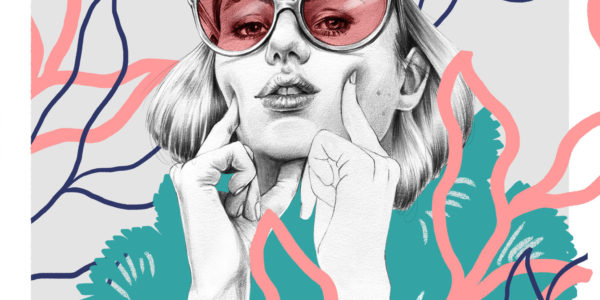
Ewelina Dymek is a self-taught freelance illustrator based in Pozna?, Poland. Her technique heavily relies on combining pencil drawing, collage and digital software, mostly working with clients from the fashion/beauty industry including Condé Nast, Neutrogena, Phyto, GQ and Falconeri.

How did your visual style develop? Where do you get your ideas and inspirations from?
My style has developed through the years through trial and error! By experimenting with different kinds of tools I was able to see how I feel about working with them. Although I feel like I’ve found my distinctive style, I’m still honing my skills to be even more proficient in using tools and be confident by expressing myself through drawing. I take inspiration from everything around me but mostly from music, which puts me in a certain mood – I can show a current state of my mind through personal illustrations and things I’ve been thinking about recently. I’m also inspired by works of the masters of fashion illustration, such as David Downton, René Bouché and Bernard Blossac. Although their style is completely different from mine, I love how expressive it is – how these artists captures fashion and femininity by using only a few strokes of paint or ink.
I take inspiration from everything around me but mostly from music, which puts me in a certain mood – I can show a current state of my mind through personal illustrations and things I’ve been thinking about recently.
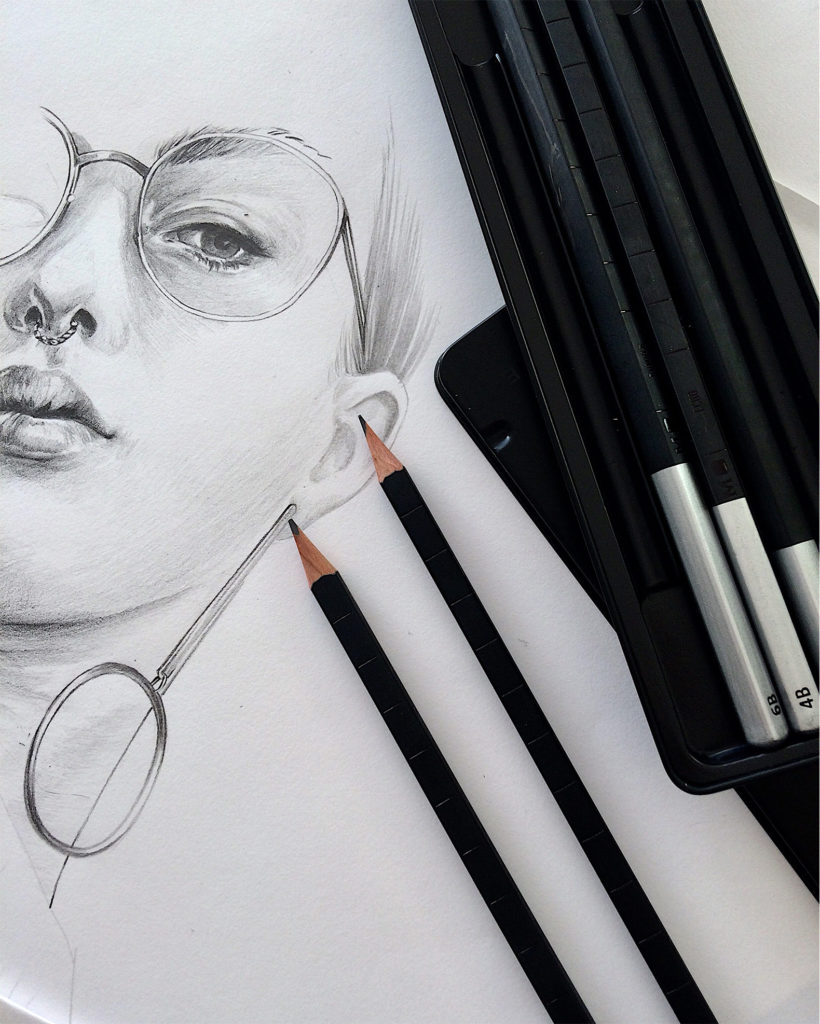
Can you describe the key qualities that make for a strong and captivating fashion illustration?
A captivating fashion illustration not only depicts clothing (which is very important!) but also evokes certain feelings and creates atmosphere. A fashion designer makes clothes not just to cover a body but to allow us to feel and behave in a certain way. By wearing a particular set of clothes, we can feel confident, easy-going, attractive, provocative, reserved etc. A good fashion illustrator not only draws a piece of clothing, but also interprets it in his their own way and is able to convey certain mood behind a designer’s collection.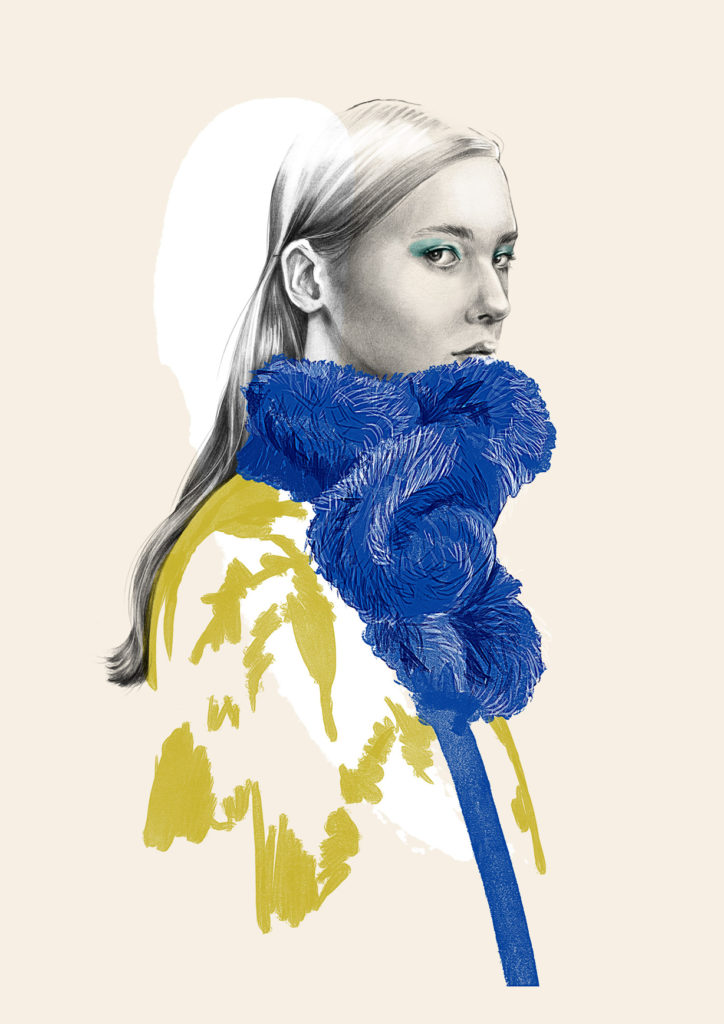
A good fashion illustrator not only draws a piece of clothing, but also interprets it in his their own way and is able to convey certain mood behind a designer’s collection.
With reference to a recent project, can you briefly talk us through one of your well-honed techniques for creating fashion illustration, from brief to final artwork? How do you typically start a new piece?
Each illustration always starts with the research, whether it is a personal or commissioned project. In terms of a personal one, once I’ve picked a subject (e.g. fragrance), I get down to do a research about a product (its ingredients, the idea behind the product etc.). My main goal is to show a potential client how to use my drawing skills to promote a product and to hire me 😉 When I gather all of the information I need, I think about a story to tell with the use of an illustration and what I want to communicate with an image of a client’s product. Then I move to the execution of my ideas and start drawing.
All of the main elements are pencil-drawn on paper. I scan the finished drawing and continue working on it by editing it in Photoshop (adjust the contrast, erase any pencil stains etc.). The last stop is picking the right colours to highlight a product and adding watercolour/ink textures previously created on paper and scanned.
In terms of a commission, the working process almost identical, however I’m following a client’s brief and direction, rather than my own.
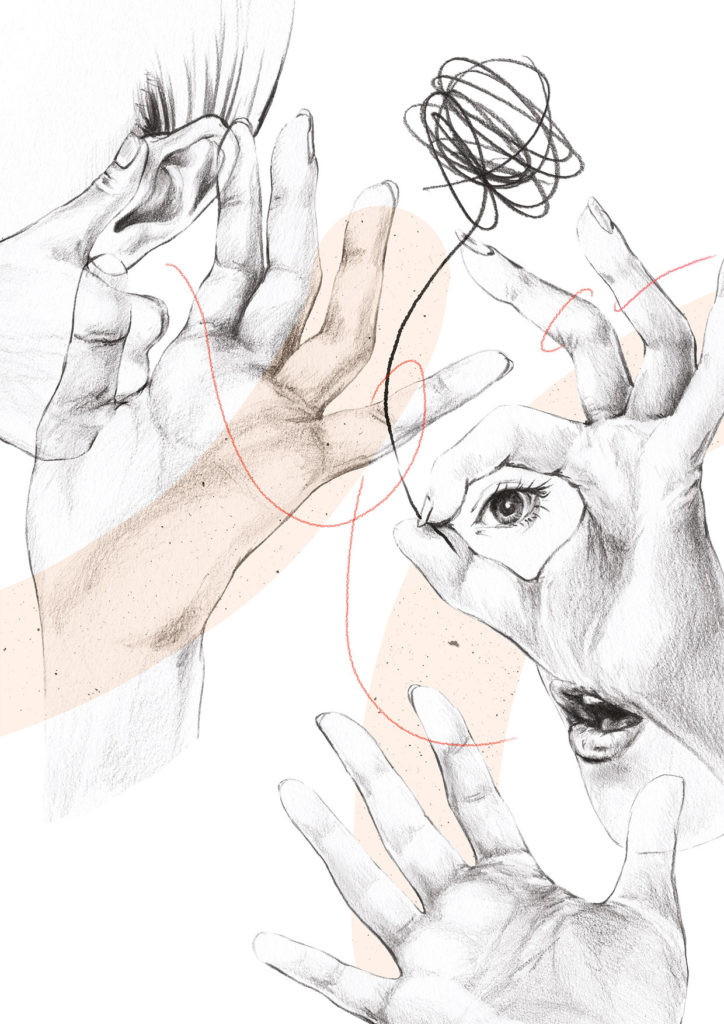
Can you talk us through the steps involved in making a fashion illustration?
- If you work digitally, don’t use the Eraser Tool too often. There’s a much better way to erase and then, if necessary, recover anything you have erased, which is a good example of non-destructive editing. If you use the Eraser Tool, you erase something for good. However, if you work with Layer Masks you can come back to the image and edit any adjustments you made previously, even after you’ve saved and closed the file.
- If you work with pencils, choose them wisely. It’s easy to get lost in numbers and letters (F, H, HB, 3B etc.), but start drawing with just one graphic pencil, for example a 2B or 3B. These kinds of pencils are good enough to sketch and shading thanks to its level of hardness and blackness. However, I prefer working with 3-4 types of pencils which my drawings the necessary depth.
- If you work from photographs (especially drawing portraits), it’s a good idea to start with drawing a rectangular grid on the portrait you want to reproduce, draw the same grid on paper and draw the portrait one grid square at a time. This will make it easier to keep your proportions correct. First outline the elements and then add shades to give your drawing more depth.

How do you approach drawing clothing and accessories?
When I’m working on a personal project, I always pick clothing and accessories that caught my eye usually while browsing through fashion magazines on the Internet in my spare time. I always try to set a proper mood, highlight clothing qualities that I find to be interesting and create a visual background of a designer’s product.
Do you use sketchbooks or digital pinboards to record your ideas when you’re away from your studio?
I use traditional sketchbooks however I often forget to take them with me when I’m away from my studio! In this case, I’m more likely to write down ideas on my iPhone and/or create a digital moodboard on Pinterest.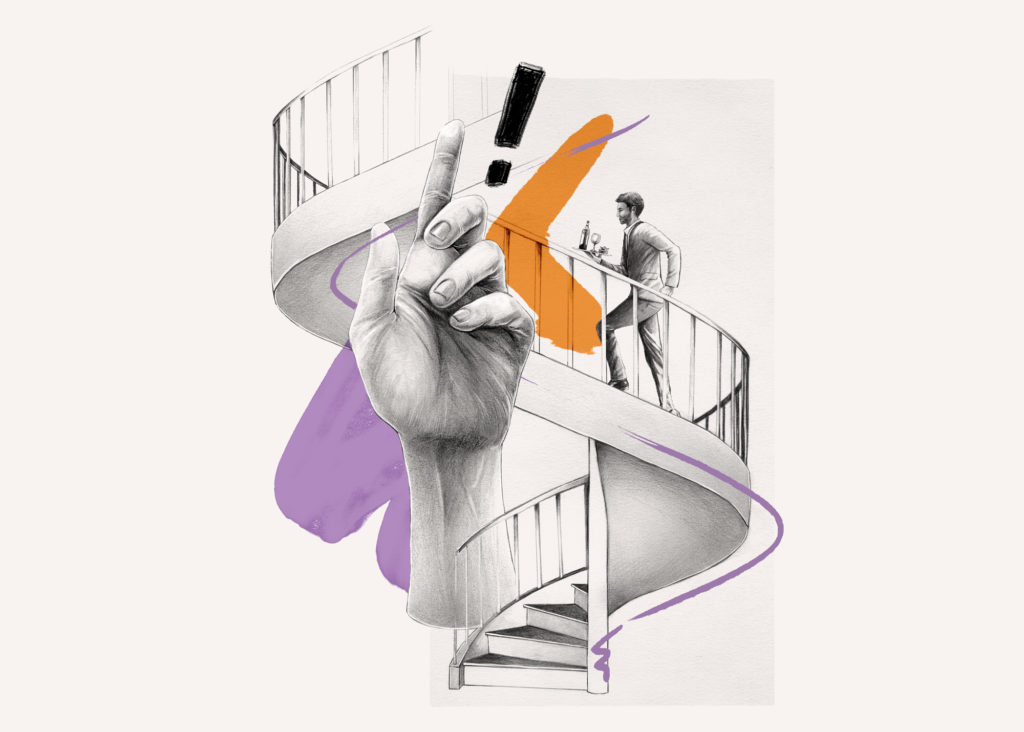
How do you create atmosphere in your work? How do you effectively use tone, colour and shadow to create mood, lighting and shadow effects?
I like to create atmosphere by using contrast and juxtapose not only dark and light shading but also detailed pencil-drawn elements with abstract shapes. Using brush strokes in a certain way makes the composition dynamic and expressive – it all depends on how visually strong I want an illustration to be. Another technique that I use to create certain mood is juxtaposing contrasting and saturated colours to make pencil drawing pop and create a visual tension.
The most important thing is to find your own drawing style – but remember, it takes a lot of time and experimentation with different techniques, so be patient and draw a lot.

For creatives who are interested in exploring fashion illustration – can you offer a trick, a tip or piece of advice to get started? i.e. how to capture movement, hint at facial expressions, stylised etc?
- Learn the basics. For example study a human’s anatomy and body proportions if you want to draw a runway model and get the hang of perspective drawing, which is super helpful if you want to add dimension to your illustration.
- Start with a flat drawing of a model (there’re many body silhouettes’ templates available on the Internet) and then move to more complex poses (taking body references from fashion photoshoots etc.) which will bring the clothes to light and give movement to them making an illustration more interesting.
- Decide if you want to focus more on being expressive to create an illustration with very limited strokes or if you want to go into details and show your craft too. The most important thing is to find your own drawing style – but remember, it takes a lot of time and experimentation with different techniques, so be patient and draw a lot.
Extracts from this interview originally published in 22 fashion illustration techniques on Digital Arts, October 2019, written by Lisa Hassell.



